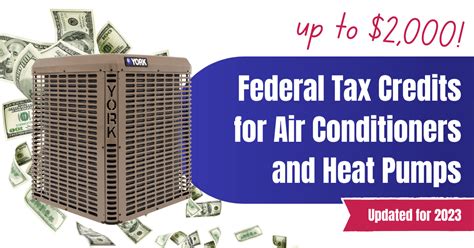Breathe Easier: Unlock Savings with HVAC Tax Rebates!
Ensuring a comfortable indoor environment is essential, but many homeowners are unaware of the potential savings available through HVAC tax rebates. As energy efficiency becomes increasingly important, tax incentives serve as a valuable tool for improving home systems without breaking the bank. In this article, we will explore what HVAC tax rebates are, how to qualify for them, and why they are beneficial for both your household budget and the environment.
Understanding HVAC Tax Rebates
HVAC tax rebates are financial incentives offered by federal, state, or local governments, aimed at encouraging homeowners to upgrade their heating, ventilation, and air conditioning systems. These upgrades focus on energy-efficient models that consume less energy, thus lowering utility bills while reducing carbon footprints.
The most common HVAC systems eligible for tax rebates include:
- High-efficiency air conditioners
- Heat pumps
- Gas furnaces
- Smart thermostats
Why You Should Consider Upgrading Your HVAC System
Upgrading your HVAC system isn’t just about comfort; it can also lead to significant long-term savings. Here are a few reasons to consider making the switch:
1. Energy Efficiency
Modern HVAC systems are designed with advanced technology that promotes energy efficiency. By upgrading, you can reduce energy consumption and enjoy lower monthly utility bills. With many systems offering SEER ratings of 16 or higher, the savings can be substantial.
2. Environmental Impact
Energy-efficient HVAC systems reduce energy demand, thereby lessening the reliance on fossil fuels. This contributes to a decrease in greenhouse gas emissions, helping to combat climate change. Upgrading your system is an excellent way to take responsibility for the environment while saving money.
3. Improved Indoor Air Quality
Modern HVAC systems often include advanced filtration systems that can significantly improve indoor air quality. This is particularly beneficial for individuals with allergies or respiratory issues, allowing for a healthier living environment.
Navigating the Tax Rebate Process
Understanding how to make the most of HVAC tax rebates can be challenging, but with some guidance, you can streamline the process effectively. Here are steps to follow:
1. Research Available Rebates
Start by researching the available rebates in your area. Websites like the U.S. Department of Energy provide updated information on federal and state incentives. Your local utility company may also offer rebates for energy-efficient upgrades.
2. Verify Eligibility
Not all systems qualify for rebates. It’s vital to check eligibility requirements for the specific model you’re considering. This may involve confirming that your new system meets certain energy efficiency standards, such as SEER or HSPF ratings.
3. Keep Documentation
Throughout the installation process, keep detailed records, including receipts, warranties, and any documentation provided by the installation contractor. This is crucial for filing your tax return and proving the system’s eligibility for rebates.
4. Consult a Tax Professional
If you’re unsure about the tax implications or need assistance with paperwork, consulting a tax professional can save you time and ensure compliance with all necessary guidelines.
Maximizing Your Savings
Many homeowners are unaware that combining various rebates can amplify savings. Here are some ways to maximize your benefits:
- Federal and State Programs: These may work in tandem, allowing you to access both types of savings. Always check the specific regulations governing these incentives.
- Utility Company Rebates: Look into local utility company incentives aimed at encouraging energy efficiency. These can sometimes be stacked on top of federal or state rebates.
- Tax Credits: Familiarize yourself with available federal tax credits that may further reduce your tax liability, directly impacting your financial savings.
Conclusion
Upgrading your HVAC system offers numerous benefits, ranging from enhanced energy efficiency to improved indoor air quality. With available tax rebates, such upgrades become more affordable, while contributing positively to the environment. As you consider your options, take the time to research the specific rebates available in your area and ensure that your new system meets the necessary guidelines. By doing so, you can breathe easier, knowing that your investment is both financially sound and environmentally responsible.
FAQs
1. What types of HVAC systems are eligible for tax rebates?
Typically, high-efficiency models of air conditioners, heat pumps, gas furnaces, and smart thermostats qualify for tax rebates. Always check specific eligibility requirements.
2. How do I find available HVAC tax rebates in my area?
Consult the U.S. Department of Energy website and your local utility company’s website for updated information on available tax rebates and incentives.
3. Is there a limit on how much I can save through these rebates?
While there may be caps on certain rebates, combining federal and state incentives, along with utility company offers, can help you maximize your total savings.
4. Do I need to file additional paperwork to receive HVAC tax rebates?
Yes, you will need to retain documentation regarding your system purchase and installation, and additional forms may be required during tax filing. Consulting a tax professional can be beneficial.
5. Are HVAC tax rebates available every year?
While many programs are ongoing, availability can vary based on budget and government initiatives. It’s essential to stay updated on current offerings each tax year.
Download Tax Rebates For Hvac
